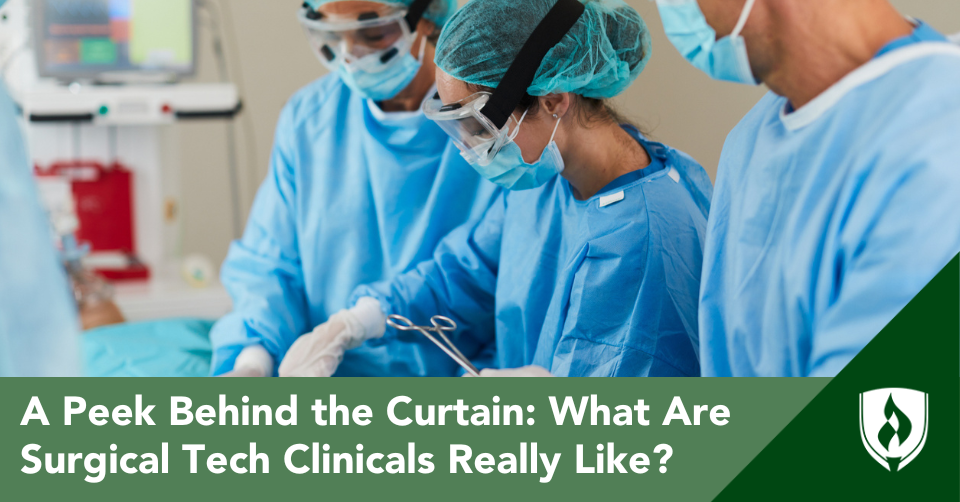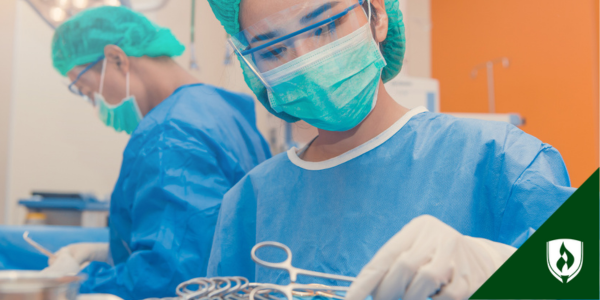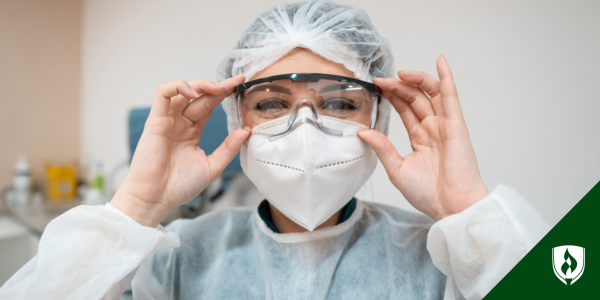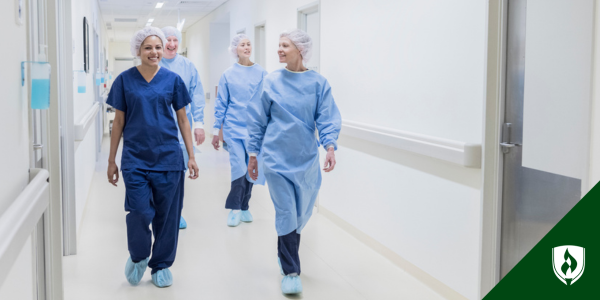A Peek Behind the Curtain: What Are Surgical Tech Clinicals Really Like?
By Noelle Hartt on 01/09/2024

Surgical tech clinicals. By far, this is the most exciting part of the entire surgical technology program. Of everything you’ll do before graduation (and the certification exam), clinicals let you get your hands dirty—well, at least in a keeping-pristine-sterile-field kind of way.
Five days a week, you’ll don scrubs and ditch the classroom for the OR. There, you’ll examine—and even participate in—surgical procedures.
You’ll get hands-on training in everything from preparing surgical supplies for operations to helping transport patients, and, of course, surgical technology and surgical assisting.
Sterile processing. Physiology. Aseptic technique. Human anatomy! You’ll have studied each of these by the time you begin clinical rotations. But, there’s nothing quite like seeing it all with your own two eyes in the OR!
8 reasons to look forward to your clinical rotations in surgical technology...
1. You’ll work in more than just one operating room
Sometimes, surgical technologist students will split up a clinical rotation between multiple hospitals or surgical centers.
“I was placed at two locations in my first rotation of clinicals,” says Allison Northrop, a soon-to-be graduate of Rasmussen’s Surgical Technologist program.
Surgical technology programs purposefully build working relationships with hospitals and surgical centers in their areas to facilitate clinicals. The better that coordination, the more quality opportunities you will have as a surgical tech student.
“We use just about every hospital in the metro area and beyond,” says Krista Vylasek, Surgical Technology Program Coordinator and Professor at Rasmussen’s Anoka/Hennepin Minnesota campus. “Some allow students to rotate 2 weeks through the cardio-vascular ORs,” she adds.
Rasmussen’s Surgical Technologist program includes two clinical rotations that equal about two quarters.
The University strives to ensure each student is placed at more than one facility between the two rotations, according to Vylasek. This way, you’ll get experience with more than one employer.
2. Clinicals can help you network
Your clinical experiences will put you in contact with employers and other surgical technologists, not to mention many different healthcare professionals. Use this opportunity to ask about the career and what others have learned through their employment.
Carolyn Abbitt, a Rasmussen Surgical Technologist student due to graduate this year wound up receiving a job offer from one of the organizations she did clinicals with.
“I was shocked, surprised and ecstatic all at the same time!”
3. You’ll learn what it’s like to be part of a larger surgical team
Hollywood might make it seem like surgeons perform operations alone. (Cue images of a dark room, a single spotlight, a lone doctor operating.)
Maybe they’ll throw in a registered nurse or two for a slightly more realistic scene. But, in a real operating room, there’s actually a whole surgical team—and, as you complete your clinicals, you’ll get to work with all of them.
“The most surprising thing I have encountered in my clinicals is how much teamwork is involved in the OR!” Northrop says. “The circulator and surgical technologist function as a partnership to care for patients and keep surgeries running on time,” says Northrop.
(A circulator, sometimes referred to as an "RN circulator," is a registered nurse who provides additional support for the patient and the rest of the surgical team in the OR.)
4. You’ll get a feel for a “typical” workday while you gain academic credit (and clinical experience!)
A quick Google search of “surgical techs” may leave you thinking this role is perfect for people who want nothing more out of life than to count sponges or cut sutures.
And, while surgical technologists are responsible for those tasks, a day in the life of a surgical technologist involves much more—and it all starts during clinical rotations.
“Your procedures all depend on where you work,” says Jill Teodoro, Surgical Technology Program Coordinator and Professor at Rasmussen’s Romeoville/Joliet, Illinois campus.
“Some hospitals do trauma—so, you might do that regularly. Some are smaller; you might take out a gallbladder. Or you might do a spinal fusion. It all depends on where you are,” she adds.
No two workdays are identical for surgical technologists. Still, there’s a certain hustle and bustle that takes some getting used to. Stepping into an operating room is kind of like landing in a foreign country: it’s got its own language, hierarchy and rhythm—none of which exist outside those four walls.
“In my first rotation, I spent a lot of time getting acclimated to the fast-paced environment in the OR. I also began learning how to be a helpful and involved member of the pre-operative patient care phase,” says Northrop.
5. Clinicals are surgical technologists’ antidote for imposter syndrome
We’ve all been there. It’s the first week at a new job—or a new class—and, somehow, you already feel like you’re behind. A cold sweat breaks out. You ask yourself, “Do I even belong here?” That’s imposter syndrome at work.
Clinicals allow surgical technologist students to get past these feelings and first-time jitters long before entering the workforce.
“Your first time putting on a pair of scrubs and stepping into an operating room is definitely nerve-racking,” says Abbitt. “The nerves calm pretty quickly, though, when you start setting up for your first case.”
“Personally, I feel that I adjusted pretty well,” Abbitt adds. “Now, even in my second rotation, I can say I haven't been overly nervous for any surgery that I've been in.”
6. You’re encouraged to ask plenty of questions
The beauty of clinicals? Everyone in the OR knows you’re still a surgical technology student. They don’t expect you to know everything, but they do expect you to participate. Pay attention, take plenty of (mental) notes and never be afraid to ask questions.
The certified surgical technologist you’ll work alongside acts as your preceptor and is there to guide you.
“My preceptors were very helpful in answering any questions I had, while giving me instruction when necessary,” says Northrop. “Around week three, I had a solid understanding of the expectations and responsibilities I have as a surgical technologist, although I am still learning new ways to apply myself every day.”
There’s an undeniable learning curve to surgical technology. It takes time to develop surgical assisting skills. So, communicate with your team, and make the most out of this experience!
“Now that I am in my second rotation, I feel as though I have truly found my footing in the OR,” Northrop says. “My set-ups are faster, my participation in patient care is smooth, and my intra-operative skills have drastically improved due to my familiarity in the OR routine.”
7. Some things just can’t be taught in a lab
Labs are an important component of any surgical tech program. Despite this, there’s just no substitute for the real thing—the OR!
“It’s one thing to practice incisions in a lab, but it’s a whole other thing to have a gallbladder handed to you,” Teodoro says.
Surgical technologist students practice aseptic technique with instruments and other supplies. They’ll use surgical equipment on dummies with foam organs, too, Teodoro explains.
“It’s different to watch a surgeon cut through the sternum with a saw. WE make sure the saw is working,” she adds.
And, as with any job, sometimes, surgical technologists find themselves working with unfriendly colleagues. The thing about surgery, though, is there’s no room for error; you can’t let your nerves get to you, even when the surgeon is a diva.
“Having a difficult doctor—that does happen. I try to be not-so-nice [in the lab] sometimes to help the student adjust,” Teodoro says. “That feeling of having a tough surgeon or anesthesiologist—it’s a different pressure.”
8. You’ll get to learn about all kinds of patient care
Becoming a surgical technologist is almost like joining a secret society. Most people have never heard of the procedures you’ll assist with. (In fact, most people have never even heard of surgical technologists.) Despite this, you’ll be an integral member of any surgical team you join.
“Some [students] go to surgery-outpatient facilities, where patients can go home the same day. [They’re] doing ear tubes on kids, hernias. That kind of thing,” Teodoro adds.
On a related note, be sure to let your instructor know ahead of time if you’re particularly interested in any one type of surgery—this way, you’ll have greater odds of being placed at a location that fits your preferences.
“Both of my clinical sites had a wide variety of cases from general surgery, cardiac, neuro, ENT, orthopedics and more,” says Abbitt.
Is a Surgical Tech program right for you?
Still not squeamish? Then an education in surgical technology might be just what you’re looking for!
As a surgical technology student, you’ll deepen your knowledge of human anatomy, surgical procedures and patient care. Plus your classes will help you prepare to sit for the Certified Surgical Technologist® (CST) certification through the National Board of Surgical Technology and Surgical Assisting (NBSTSA®), sometimes called the National Certification Examination.
If you are considering this career, you’ll need some better information on what the education will involve and the entrance requirements you need to meet to gain admission into a surgical technology program.
Related Articles:
- Do You Have to Take the TEAS Test to Become a Surgical Tech? + Other Entrance Requirement FAQs
- What is the Surgical Tech Career Path? From Start to Advancement
- Why Are Operating Rooms So Cold? A Sneak Peek from Inside the OR
- Awake During Surgery: How the OR Changes When You're Not Under General Anesthesia
Certified Surgical Technologist® is a registered trademark of NATIONAL BOARD OF SURGICAL TECHNOLOGY AND SURGICAL ASSISTING
NBSTSA® is a registered trademark of NATIONAL BOARD OF SURGICAL TECHNOLOGY AND SURGICAL ASSISTING




